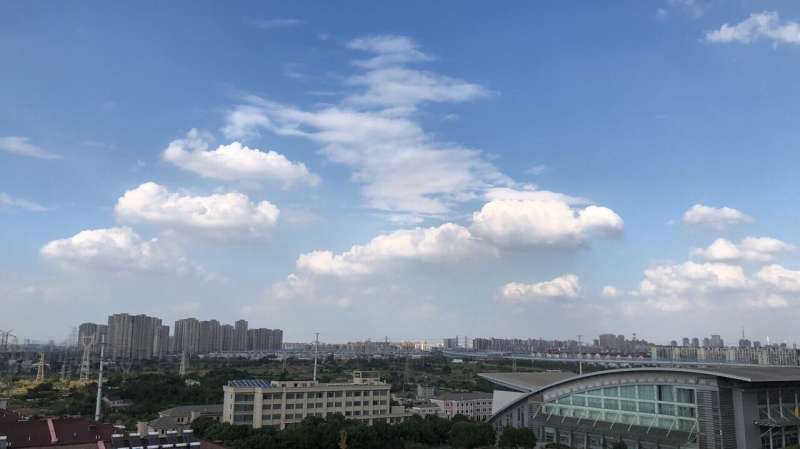This article has been reviewed according to Science X's editorial process and policies. Editors have highlighted the following attributes while ensuring the content's credibility:
fact-checked
peer-reviewed publication
trusted source
proofread
Examining the entrainment rate of shallow cumulus clouds and its influencing factors

Clouds are not only a mesmerizing spectacle in the sky but also a crucial player in Earth's atmospheric dynamics. Among the many types of clouds, cumulus clouds stand out because of their pivotal role in regulating weather patterns and climate. One of the fundamental processes that shape the development of cumulus clouds is entrainment mixing, where surrounding air interacts with the cloud, influencing its growth and properties.
Accurately quantifying the rate of entrainment holds the key to improving our understanding of cloud behavior and ultimately enhancing weather and climate models.
A recent study, published in Advances in Atmospheric Sciences, has taken a significant step forward in unraveling the complexities of entrainment mixing within cumulus clouds. This research introduces an innovative approach, an improved "bulk-plume method," which tackles the challenge of calculating the entrainment rate by simultaneously solving equations for two conserved variables.
Unlike traditional methods, this approach promises enhanced reliability and precision in estimating the entrainment rate within the framework of large-eddy simulations.
The outcomes of this study present compelling evidence of the efficacy of the improved bulk-plume method. The calculated rates of entrainment falls within the range of those values obtained from a traditional method that employs different conserved variables. Notably, the entrainment rates obtained from various times and heights of cumulus cloud exhibit a consistent log-normal distribution pattern, reaffirming the stochastic nature of the entrainment process.
A noteworthy finding from this research is the prominent role of vertical velocity in influencing the rate of entrainment. The study highlights that the relationship between the entrainment rate and vertical velocity surpasses that with other thermodynamic or dynamical properties. This revelation underscores the potential of vertical velocity as a primary factor for refining future entrainment rate parameterizations. By identifying this key factor of influence, the study offers valuable insights into improving the accuracy of cloud models and predictions.
In summary, this study, jointly conducted by Nanjing University of Information Science and Technology, Nanjing Joint Institute for Atmospheric Sciences, Civil Aviation Flight University of China, Lanzhou University, and Hong Kong Baptist University, deepens our comprehension of the mechanisms of entrainment mixing that underlie cumulus cloud development.
The introduction of the improved bulk-plume method introduces a more reliable way to determine the entrainment rate, bridging a crucial gap in weather and climate models. The observed correlation between the entrainment rate and vertical velocity sheds new light on the intricacies of cloud dynamics and paves the way for refined parameterizations in models.
As we continue to refine our understanding of clouds, we take a step closer to more accurate weather forecasts and better-informed climate predictions, emphasizing the vital importance of studies like this in shaping our understanding of the complexities of Earth's atmosphere.
More information: Lei Zhu et al, The Probability Density Function Related to Shallow Cumulus Entrainment Rate and Its Influencing Factors in a Large-Eddy Simulation, Advances in Atmospheric Sciences (2023). DOI: 10.1007/s00376-023-2357-6
Journal information: Advances in Atmospheric Sciences
Provided by Chinese Academy of Sciences





















